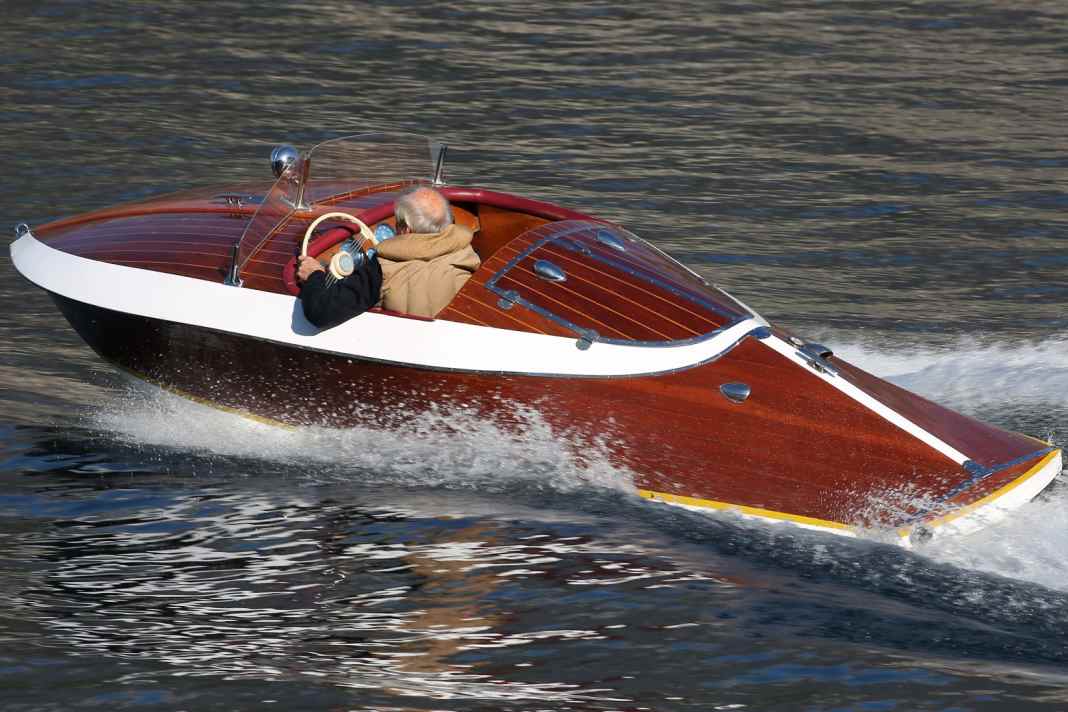





Milan, 12 September 1946: After three editions that had been cancelled due to the world war, the public did not miss the opening of the Fiera Campionaria, the major consumer fair in the Lombard capital with innovations in a wide range of sectors. The city still bore the painful scars of the bombings, but the time was ripe for reconstruction and a future geared towards progress. In the large "Transport and Movement" pavilion, the area reserved for shipping presented a handful of exhibitors who were determined to make us forget the difficult times.
Among them were some that had been at the centre of the war effort not so long ago. Cabi Cattaneo, Alfa Romeo, Baglietto or Cranchi. They had produced the famous MTM (Motoscafi di Turismo Modificati), single-seater speedboats that were loaded with 300 kilograms of explosives and used against enemy ships. The pilot, a combat swimmer, jumped out of his seat before the impact. With manned torpedoes and MTMs, Italy was at the forefront of the development of these so-called small arms, which were successful in high-risk special operations.
A breath of fresh air after the war
Not far from the Cranchi stand, visitors were fascinated by a newcomer: the Insam boatyard, represented by its founder, exhibited two sophisticated models with very refined lines, with outboard and inboard engines, with two, four or six seats, but which had nothing to do with weapons. The name of this avant-garde manufacturer, which relied heavily on its own technology, was an abbreviation of Ingegnere Saporiti Milano. Not much more is known, except that before the war a certain Saporiti was mentioned in the management of the large shipbuilding group Ansaldo, better known today as Fincantieri.
The then very modern but small Insam shipyard was founded in 1945 in the village of Azzano on Lake Como. The journalists from the magazine Vela e Motore gladly accepted an invitation from the mysterious and friendly engineer Saporiti. However, in the autumn of 1946, due to bottlenecks and restrictions of all kinds, the two reporters had to get on their bicycles to ride the 60 kilometres or so from their office in Milan to the lakeshore. On the spot, they discovered a small but progressive company for which nothing seemed too ambitious to guarantee the quality and efficiency of its series production of sports boats.
The very short history of a shipyard
However, the order books did not fill up as quickly as expected. As a result, the plant in Azzano was closed again barely three years later. Nobody knows exactly why the company was so short-lived. And why nothing remained but a perfectly functioning small two-seater motorboat with a Lancia-Aprilia engine and the wreck of a racing boat hull in the depot of the Museo della Barca Lariana, not far from the former Insam site.
One fact may explain the survival of the preserved two-seater: its extraordinary lines and spectacular overall appearance. It turned out that the very first saviour of the Insam was a true legend himself: Pietro Vassena, a bustling inventor with a passion for mechanics who, among other things, set a world depth record in Lake Como with a submersible of his own design, not far from Lecco, where he had his laboratories and workshops. It is not known how the Insam prototype found its way to him.
A schoolboy falls in love
However, the next turning point in the boat's fate is well documented: it was triggered by the passion of a local schoolboy who had fallen in love with the piece. The year was 1965, and Dody Jost, who later became a great boat collector, was just 15 years old when he discovered the Insam hull in the yard of the inventor's workshop, a place that was crammed with thousands of other technical and scientific artefacts:
My way to school took me past the boat and I began to dream of being able to buy it," says Dody Jost.
"I started to annoy Pietro Vassena, even though he was a great hero to us all. I'll never know whether the man was prepared to sell the Insam for a sum I could afford out of pity or to get rid of me," recalls Dody Jost. So he came into early possession of a 1945 runabout that was perfectly preserved in its original condition - at a time when many "old" wooden boats came to a bad end. He felt obliged to preserve the Insam and admired the expertise of this short-lived shipyard.
Rescued and rescued again
Their conservation was then aided by two meticulous restorations carried out by master craftsmen, first by Timossi in the mid-1970s and then, more recently, by Erio Matterri. However, the owner of the Insam never wanted his classic boats to spend their lives as museum pieces, but preferred to keep them in perfect technical condition and use them as often as possible.
His attachment to this Lancia motorboat, which still runs like clockwork, is all the stronger because it represents the early realisation of a childhood dream and is also the only surviving runabout of a brand that has long since disappeared:
My Insam would also have been a close second," says Dody Jost.
At Timossi, who, like Insam, were based in Azzano, Dody Jost had learnt of the dramatic beacon that was to seal the end of the shipyard. One morning, engineer Saporiti had lined up his remaining boats on the beach and set them alight in a final gesture of disappointment. Guido Abbate, the famous boat builder, saw the blazing spectacle and ran to save at least the rare wood that was so hard to come by at the time. The Insam was also snatched from the flames and survived - although its own creator had already sealed the fate of this unique prototype by destroying it himself.

